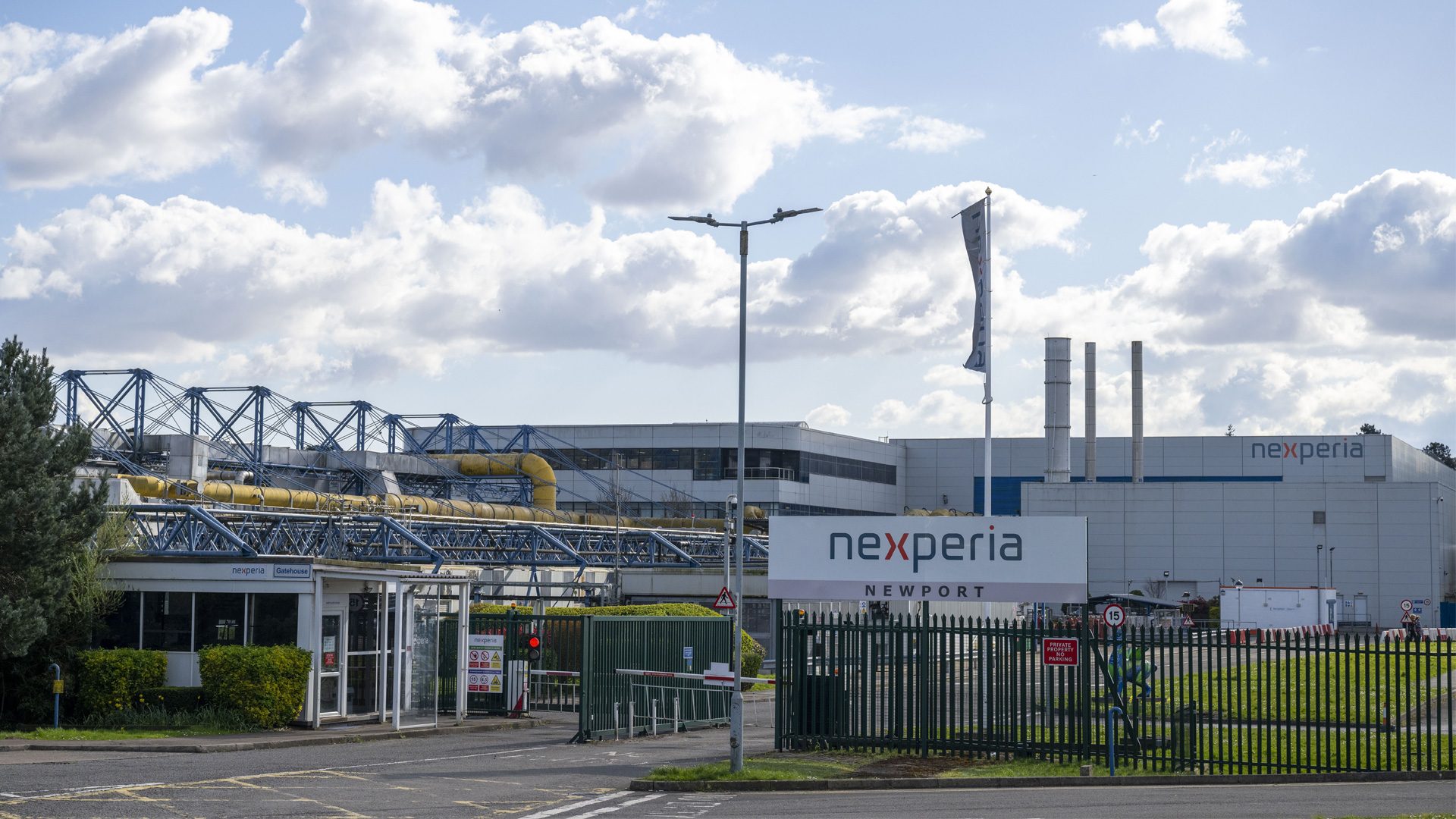Dutch Nexperia takeover saga partly driven by CEO misappropriating $200 million to rescue failing private interests, court records show — U.S. diplomatic pressure may also have played a role
The U.S. government had reportedly been trying to oust him for months, too

The Dutch government's decision to take control of the Chinese-owned Dutch chip manufacturer Nexperia wasn't just to prevent technology from being transferred overseas, but also based on serious financial concerns over the CEO attempting to bail out his other company with Nexperia funds, according to the Dutch newspaper NRC.
New court records published by the paper allegedly show that Chinese executive and founder of Nexperia's parent company, Wingtech, Zhang Xuezheng, forced Nexperia to place an order with his privately owned chip factory, WingSkySemi in Shanghai, worth over $200 million. That, despite it actually requiring less than $100 million worth for its own production needs.
The paper claims (via @Loekalization/X) that Nexperia executives resisted, but were then frozen out of company accounts. Xuezheng even fired several financial officers and the company's Chief Legal Officer when they complained. As it goes, board members then contacted the Dutch Ministry of Economic Affairs, which ultimately stepped in to remove Xuezheng from power and reassert control over the company.
This complicates the narrative that the Dutch government was trying to resist the loss of specific technologies from the Netherlands and the EU. Adding more to the picture, a New York Times report on the ongoing saga alleges that Washington was also involved. According to its report, court documents reveal "U.S. officials had pressured the Dutch government about the company’s ownership," and that one American official allegedly stated "The fact that the company’s C.E.O. is still the same Chinese owner is problematic."
It may be partly down to all those factors, though it appears the catalyst may have been Xuezheng's private greed. He forced European officials' hands, and then is reported to have requested assistance from Beijing, expanding the political scope of the spat.
It also falls on the backdrop of ongoing polarization in the global supply chains of advanced silicon. We've seen the Trump administration take a great interest in the access to and sale of advanced AI processing technology like GPUs and CPUs to China. This move may be further action to restrict Chinese access to chips for a range of purposes, too.
Indeed, as nations around the world look to build out their own domestic supply of chips and access to AI technologies through infrastructure building projects, access to the latest semiconductors (and even some older designs, it appears) has become of strategic, as well as economic, importance. The potential of a future conflict between China and Taiwan (where up to 90% of the world's most advanced semiconductors are produced) and its allies before the end of the decade looms over the entire endeavour, too.
Get Tom's Hardware's best news and in-depth reviews, straight to your inbox.
The New York Times quotes Reva Goujon, a director at research firm Rhodium Group, as saying, “All these governments are very uncomfortable with [interdependent supply chains] and would like to see these assets back in their possession.”
Even if it's not clear who fired the first salvo in this silicon trade war, China is just as involved. Just days after the Nexperia takeover by the Dutch government, it barred Nexperia's Chinese facilities from exporting any of their products. Nexperia management is contesting this, but it's not expected to make much headway.
China also recently announced anti-monopoly investigations into major US companies, Nvidia and Qualcomm, in what is considered additional maneuvering for strength ahead of potential trade talks with President Trump at the end of October.

Follow Tom's Hardware on Google News, or add us as a preferred source, to get our latest news, analysis, & reviews in your feeds.

Jon Martindale is a contributing writer for Tom's Hardware. For the past 20 years, he's been writing about PC components, emerging technologies, and the latest software advances. His deep and broad journalistic experience gives him unique insights into the most exciting technology trends of today and tomorrow.
-
pug_s Somehow I fail to see the 'outrage' of what Nexperia did. So Nexperia 'misappropriated' money by placing an 'excess' amount of orders from the sister company and that caused the Dutch Authorities to go bonkers? How does this violate its cold war era of Goods Availability Act? This is nothing more than using lawfare in order to steal Chinese assets in Dutch soil.Reply
In any case, it is a good thing that the Chinese government stop Nexperia's factory in Dongguan (which produces 70% of Nexperia's goods) from exporting its goods in order to stop this kind of State sponsored theft. Maybe the Chinese government will give ownership of this factory to Wingtech and leave the morons in the Netherlands who are running this company to the ground. -
Co BIY Replypug_s said:Somehow I fail to see the 'outrage' of what Nexperia did. So Nexperia 'misappropriated' money by placing an 'excess' amount of orders from the sister company and that caused the Dutch Authorities to go bonkers? How does this violate its cold war era of Goods Availability Act? This is nothing more than using lawfare in order to steal Chinese assets in Dutch soil.
In any case, it is a good thing that the Chinese government stop Nexperia's factory in Dongguan (which produces 70% of Nexperia's goods) from exporting its goods in order to stop this kind of State sponsored theft. Maybe the Chinese government will give ownership of this factory to Wingtech and leave the morons in the Netherlands who are running this company to the ground.
The "company" didn't perform these actions. A single executive did without proper authorization. -
pug_s Reply
Since when a company is a 'democracy?' And a CEO have to make decisions without authorization. How does his decision violate the Goods Availability Act?Co BIY said:The "company" didn't perform these actions. A single executive did without proper authorization. -
daworstplaya Reply
Are you having difficulty reading? Based on the article, this has nothing to do democracy. This has nothing to do with Goods Availability Act, but theft of company resources for personal gain by the CEO.pug_s said:Since when a company is a 'democracy?' And a CEO have to make decisions without authorization. How does his decision violate the Goods Availability Act? -
pug_s Reply
The reason why I brought up the term democracy is because I am responding to the other person who claims that this company is a dictatorship. This has everything to do with the Goods Availability Act because the Dutch government used this law to remove the Chinese CEO and changed ownership of the company. Third, where does it say the Chinese CEO is 'guilty' of theft of resources? He made the decision for the company to buy goods from their sister company.daworstplaya said:Are you having difficulty reading? Based on the article, this has nothing to do democracy. This has nothing to do with Goods Availability Act, but theft of company resources for personal gain by the CEO. -
JamesJones44 Reply
No... The CEO answers to the board, who answers to a shareholders of a public company. At no point is a CEO expected to make decisions "without authorization", nor is it "legal".pug_s said:CEO have to make decisions without authorization -
pug_s Reply
You are wrong. Nexperia was not a public company and was wholly owned by Wingtech, therefore doesn't have to answer to its non-controlling shareholders. Zhang Xuezheng — who was also the controlling shareholder of the chipmaker, can make decisions of the company against the wishes of its CFO and other officers of the company.JamesJones44 said:No... The CEO answers to the board, who answers to a shareholders of a public company. At no point is a CEO expected to make decisions "without authorization", nor is it "legal".
https://www.ft.com/content/db019842-01a9-4488-a6a0-45d0e102536b
Here's a pretty good article of what's going on with the company who are at odds with the government it is operating on and how the Dutch government doesn't like the Chinese control and ownership of the company. It is very much like what happened to Tiktok in the US despite complying with US laws. -
SirStephenH ReplyThe paper claims (via @Loekalization/X) that Nexperia executives resisted, but were then frozen out of company accounts. Xuezheng even fired several financial officers and the company's Chief Legal Officer when they complained.
Sounds a lot like the U.S. federal government right now, we probably would have supported his actions if China wasn't involved.